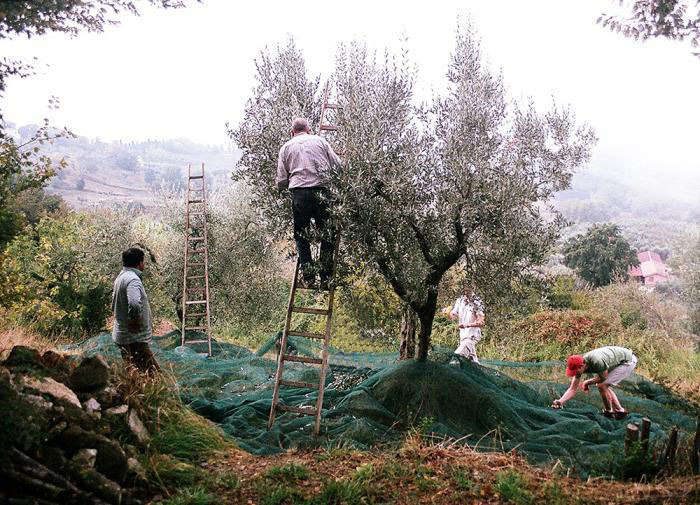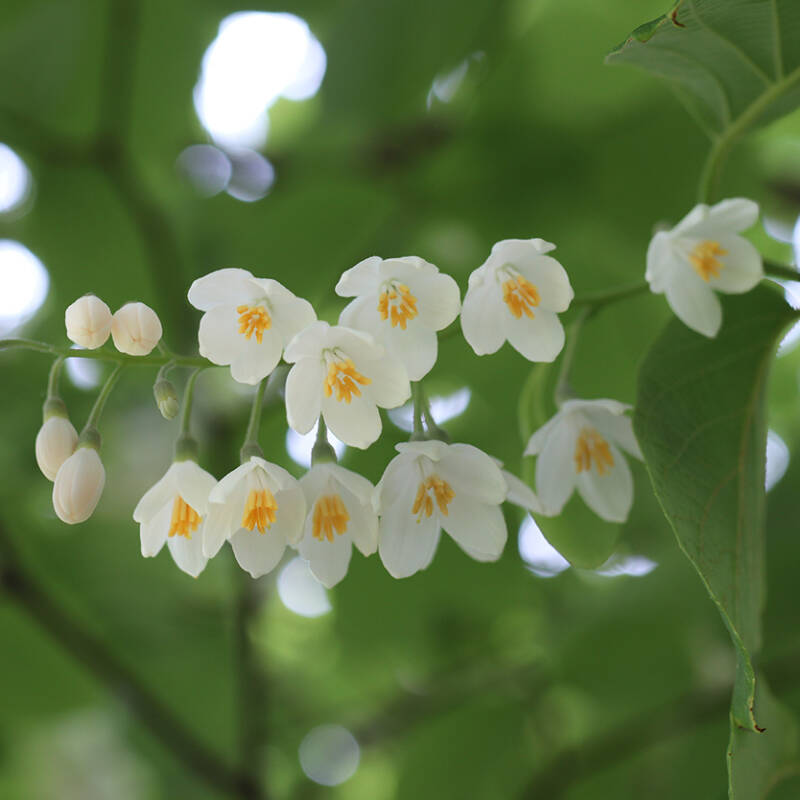Nothing announces the Mediterranean or Mediterranean-inspired garden more than stately olive trees, Olea europaea. This is especially true when these trees partner with fields of fragrant lavender and punctuations of Italian cypress. Luckily, olive trees can be successfully grown here in the states (USDA Zones 8-10), and recently I had the pleasure of visiting McEvoy Ranch, a family-owned, 550-acre estate in Petaluma, California, that is home to an impressive 50 acres of Tuscan olive trees. I asked McEvoy Ranch’s president, Samantha Dorsey, about how to care for olives and she shared this: “Olives need lots of sun, some water, and well-draining soil. They prefer a moderate amount of water and occasional fertilization. Olive trees grown in an intensive orchard setting for maximum fruit production require somewhat more specific attention, but olive trees in a landscape and garden setting can thrive with very little care. Just please do not overwater your olive trees—this will make them very unhappy indeed.”
Below, 10 more things to know about olive trees:
1. Olive trees will outlive you—possibly by thousands of years.

You may already know that olive trees have been around for millennia (cultivated for at least 6,000 years) but did you know that they can also live for thousands of years? In fact, many olives in the Mediterranean are scientifically verified to be 2,000 years old.
2. Olive trees are mainly grown from cuttings, not pits.

If you try to grow an olive tree from a pit, make sure it’s raw and fresh (not store-bought or previously preserved), and be prepared to wait an extremely long time for signs of growth. The other crucial factor to know is that they won’t grow true to type from a pit. Most commercial olives are grafted onto rootstock from cuttings, similar to wine grapes.
3. Olive trees can be bushes.

Love olive trees but don’t have room for one? Check out one of my favorite low-water and low-maintenance bushes, Olea europaea ‘Montra’. This non-fruiting, evergreen shrub tops out at 6 feet high and wide and can be kept smaller with regular pruning. Perfect for a formal hedge or alone in a large container.
4. Olive trees can cause allergies.

Who would’ve thought that people can be allergic to olive trees when they are in bloom? How do I know this? Well, during a visit to my allergist for a skin prick test, my doctor notified me that I am highly allergic to olive tree pollen. This explains my runny nose and sneezing around these trees. At first I freaked out a little thinking that this also meant I was allergic to olive oil (a major staple in my diet) but after some research, I learned (thankfully) that this is not the case.
5. Olives are not tasty off the tree.

Ever tasted a fresh olive? If you have, then I’m so sorry. Fresh, raw olives are surprisingly very bitter and need to be fermented, cured in a vinegar or salt water brine, or dry-cured with oil in order to be delicious.
6. Olive trees are slow-growing.

When a tree, like an olive, is slow-growing then it pays to buy the largest one you can afford to avoid frustration and disappointment. I usually recommend nothing smaller than a 15-gallon tree.
7. …and slow to fruit, too.
On average, an olive may take four to five years before it fruits. This production is also dependent on whether the growing conditions are warm and sunny enough. If these requirements aren’t met, then fruiting might not occur at all.
8. Olive trees need proper pruning.

Italians say that you should prune the olive tree in such a way that a bird can fly through the middle of it. Pruning is needed to reduce the density of the foliage and allow sunlight to infiltrate every part of the tree. Also, olive trees produce fruit on the previous year’s branches, so in order to have fruit every year you must make sure that adequate growth occurs every year. In general, prune fruiting olives after harvest. If you are growing a non-fruiting olive, proper pruning is still strongly encourage to avoid a gangly or lopsided tree; plus it’s always a good idea to remove dead, diseased, or damaged limbs. This can be done in the spring or early summer. Pro tip: watch out for snacking deer who also like to “prune” young olive trees. You may need to net the lower branches or spray a deer repellent on newly planted trees.
9. Olive trees can be a houseplant.

Looking to add a little Mediterranean style to your home decor? A potted olive tree might be the addition you need—for a little while at least. Long-term these trees are best grown outside. But a potted olive can thrive for a year or so indoors as long as you make sure it gets lots of light—a south-facing window or under a skylight works. Maintenance-wise, water your indoor olive when the top inch of soil is dry to the touch. If you see leaves yellowing and dropping, then either it is receiving not enough or too much water. Use cacti/palm soil for good drainage, as soggy soil can be detrimental. Pest-wise, be on the lookout for scale invading leaves and stems. Pro tip: An early scale invasion can be handled by simply picking off the critters.
10. Olive trees are considered sacred.

Amazingly, almost all parts of an olive tree have significance. The trees themselves symbolize wisdom, peace, power, fertility, and purity. The branches symbolize peace and abundance and were once ritualistically offered to deities and powerful people as signs of purification and blessings. And olive oil has long been considered sacred and is still used today in many religious ceremonies.
See also:
- Gardening 101: Olive Tree
- The Novice Gardener: Help, Can This Olive Tree Be Saved?
- Olive Garden: A Houseplant That Can Live for Centuries









Have a Question or Comment About This Post?
Join the conversation